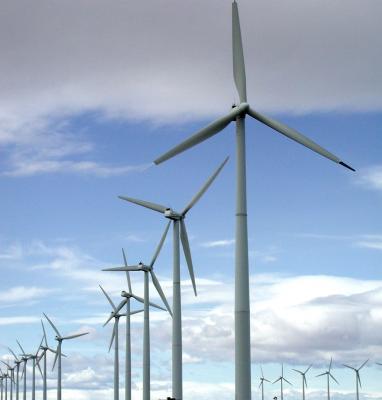 Colorado Gov. Bill Ritter knows the future is renewable. Ritter and Colorado Democrats announced the first of what could be a dozen bills last week aimed at making Colorado a leader in renewable energy. “The new energy economy is not just a slogan. It’s here already and it’s here to stay,” said House Majority Leader Alice Madden, D-Boulder.
Colorado Gov. Bill Ritter knows the future is renewable. Ritter and Colorado Democrats announced the first of what could be a dozen bills last week aimed at making Colorado a leader in renewable energy. “The new energy economy is not just a slogan. It’s here already and it’s here to stay,” said House Majority Leader Alice Madden, D-Boulder.
The bills will speed the adoption of renewable energy sources, create transmission lines, tax breaks for homes and schools that use renewable energy and subsidies for large renewable projects. People against the bills claim the market should be the one sorting out what energy sources Colorado should use, but supporters of the initiative say it will be a boon both environmental and economic. They want to build upon the momentum started two years ago when voters approved Amendment 37, that required utilities to get 10 percent of there power from renewables by 2015.
Ritter plans on drawing experience from the expertise at the National Renewable Energy Laboratory in Golden and other federal facilities and universities, Colorado could become a magnet for the industry, attracting manufacturers as well as more wind farms. Colorado also has an abundance of wind and sunny days. The advocacy and trade group American Wind Energy Association rates Colorado as the 11th windiest state in the country and roughly 10th in wind power produced.
“The voters have given us a direction and we’re trying to fulfill that direction and go from potential to reality,” said Senate President Joan Fitz-Gerald, D-Golden.
Sponsors of the proposal to raise the renewable energy standard to 20 percent say it will cost typical residential and commercial customers less than a dollar a month on their bills. Amendment 37 caps price rises at 1 percent, and if consumers’ rates rise more than that because of the measure, the requirement is nullified.
A good colorado company on the right track.
http://www.geodesic-greenhouse-kits.com/
* Practically impervious to heavy snow and high wind, the greenhouse dome pictured here keeps winter temperatures inside about 25[degrees] higher than they are outside–with no supplemental heat. The 22-foot-diameter dome, in Pagosa Springs, Colorado, lets its vegetarian owners grow much of their own food all through winter, although they once had to dig a path through 4 feet of snow to bring in the day’s harvest.
Adapted from Buckminster Fuller’s geodesic dome design, the wood-framed structure is glazed with double- or triple-walled polycarbonate triangles. Sunlight streams through the glazing and heats up water in a 1,200-gallon tank during the day, while a solar-powered fan pumps air through ducts in planting beds, warming the soil. At night, the water tank releases its warmth back into the air, keeping plants toasty until the morning sun takes over. When the temperature in the dome gets too high, automatic vents open and let the warm air out.
You can buy geodesic dome greenhouses in a variety of sizes from Growing Spaces (800/753-9333 or http://www.growingspaces.com). The cost of a complete kit for a 350-square-foot dome is $6,950 for a model with double-wall glazing (shown in the photos) and $8,745 for a model with triple-wall glazing. You can also buy a kit that doesn’t include pressure-treated lumber, if you want to purchase the lumber to frame it yourself. Lumber for planting beds isn’t included.
The backyard gardening dome
If you want to grow your own food even in adverse climates, and you have some room in your backyard, a smaller, consumer-model dome greenhouse may be your method of choice.
Although they’re not closed eco-systems, fifteen-foot dome greenhouses can be made quite cheaply from scratch or, for about $4000, from a kit that comes complete with water-cistern-cum-fishtank and multiclimate operating instructions. A structure of this size can grow enough vegetables to supply two to three people (depending upon how much they like vegetables) on a year-’round basis. That seems like a pretty timely idea.
To find out about dome greenhouses, we talked with Udgar Parsons, owner of Growing Spaces in Pagosa Springs, Colorado. His company specializes in the
This is definitely the kind of leadership Colorado needs!